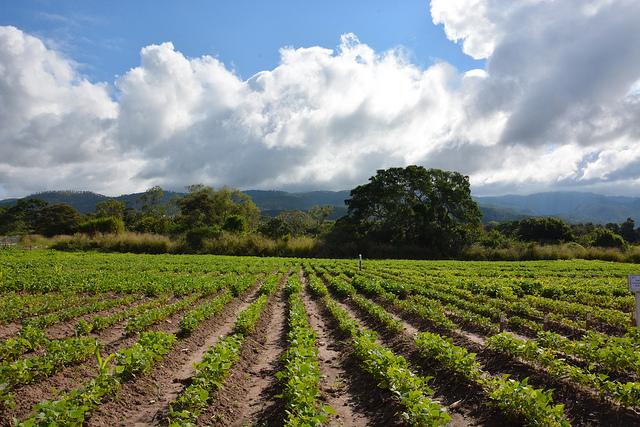The more the wiser? Exploring how farmer citizen science can deliver solid results

In high numbers, farmers do not need intensive training to provide valuable data for agriculture research.
All sorts of questions may keep scientists awake at night. Are we being accurate? Precise? Have we escaped our biases? Is this the best way? There is no definitive yes, despite expertise and the best of intentions.
Data collection is essential for good science. And collecting data through participatory methods has gained some momentum when it comes to agriculture. Not enough though, as farmers still need to receive extensive support from researchers to provide high-quality data. That means time and training, and naturally, costs. Involving a larger number of farmers in agriculture research involves financial and logistical weighs difficult to overcome when following the beaten paths of research.
Most research in agriculture ultimately aims to improve the lives of farmers and making them part of the process seems only logical – researchers access knowledge and insights from the field, while farmers gain motivation to adjust to novel agricultural practices and tools. But how can farmers be in the first line of research without having researchers breathing down their necks the whole time?
Farmers as citizen scientists – the many and wise
A new study shows that even though individually, farmers tend to provide observations that are not highly reliable, when many of them come together, the aggregated data they supply is scientifically sound. Researchers from Bioversity International, within the scope of CCAFS, Humboldt-University of Berlin, and the Programme for Rural Reconstruction in the Honduran village of Horconcito, in the Santa Barbara District, tested how accurately farmers’ observations agree with scientific standards. They also aimed to find out whether the so-called “Wisdom of Crowds” can be used in agricultural research.
Citizen science
The collection and analysis of data relating to the natural world by members of the general public, typically as part of a collaborative project with professional scientists. (Oxford English Dictionary, 2014)
Crowdsourcing
The practice of obtaining needed services, ideas, or content by soliciting contributions from a large group of people and especially from the online community rather than from traditional employees or suppliers (Merriam Webster Dictionary)
The Wisdom of Crowds is a well-known concept when talking about citizen science and crowdsourcing and refers to a type of synergy where even though individual contributions might depart from the “true value”, in conjunction, they balance each other out. But this is not a given, the study points out. For that to happen, there is a need for many points of view to come into play, while farmers should collect data independently.
Keeping it simple
This is the first study that looks at the quality of data emerging from a farmer citizen science methodology. For that, researchers used the so-called tricot method. It’s a simple idea. Farmers receive three random varieties of a crop from a larger set and grow them together with their crops, evaluate and rank them based on a few aspects. Then they pass on their results to researchers by phone, verbally or on paper.
In this case, volunteer smallholder farmers at five sites in Honduras received three varieties of common bean out of a total of seven. They grew them the same way, then they evaluated the plants’ vigor, architecture (how upright plants stand), resistance to pests and diseases, features that can be assessed rather objectively, according to the authors. The researchers asked the 35 farmer observers straightforward questions that didn’t require quantities and ultimately, it got down to which variety was best and worst for each feature.

Bean crops in Honduras. Photo: Jose Luis Urrea (CCAFS)
The researchers found that depending on the variety’s trait, 77-100% of observations matched or nearly matched the “scientific” ranking of an agronomist. “Farmers have variable views and experiences, which may lead to very divergent observations of reality. Nonetheless, when the diverse observations and opinions of many farmers are taken together as a whole, robust scientific results can be achieved that reflect common scientific standards well,” says Jonathan Steinke, research fellow at Bioversity International and lead author of the study.
The researchers explored different realistic research settings by a computer simulation. They found that the more farmers participated in the experiment and provided data, the more varieties could be reliably distinguished from one another.
Careful with the stats
So what are we really talking about here? Well, validity and reliability are some of the holy grails of the scientific method. We want our results reliable – to measure things consistently – and valid – to be as close as possible to reality or to a recognized standard. In this case, the researchers point out, the tricot approach gives greater importance to validity than to reliability. And compensates for the low reliability by a large number of observations.
One thing to take into consideration with involving farmers in research is that they might see the same thing as the researchers, but use very different words to describe it. But as the researchers point out in the study, “a key motivation for participatory research is to accommodate diverse viewpoints, and to tap into knowledge that is inaccessible, hard to interpret, or invisible to researchers.” So, in giving independence to farmers as citizen scientists, it is critical to make sure both parties are looking at the same thing.
It was not a smooth ride, as researchers also had to reconsider and adjust their ways. They asked questions that produced low-quality data, so they refined how farmers reported their observations, while redesigning the collection and compiling of that data, explains Steinke. “We also experienced that this way of doing research – involving farmers as autonomous citizen scientists, splitting a major crop trial into many independent micro-trials – was a very new and sometimes odd thing to our research partners. We were lucky though to work with some very renowned breeders who were interested in this novel way of doing research,” he adds.
Farmers are generally very motivated to take part in the tricot experiments,” says Jonathan Steinke, research fellow at Bioversity International. “They are curious to get to know new varieties and see the opportunity to learn about farming and to discover good varieties that may work well on their farm."
Now, where to?
“Many successful participatory agricultural research projects focus on strengthening the diagnostic skills of low numbers of farmers and work with farmer research groups to produce farmer-generated data,” Steinke explains. But reducing costs in participatory research and scaling up the role of farmers in collecting data requires departing from established approaches.
Seeds for Needs, a Bioversity International initiative, runs crowdsourcing trials in countries on three continents, the first experiments that “rely completely on the systematic collection of data generated by individual farmers, with minimal supervision or assistance by researchers,” Steinke says.
Empowering farmers to become citizen scientists in agricultural research will take more than asking questions the right way.
The researchers are currently working with young entrepreneurs to explore how private companies can use the tricot method to enable farmers to discover new agricultural technologies through small trial packages. They are also looking at ways in which farmers can use digital tools to unearth new issues to explore by research.
Download the study: Steinke, J., van Etten, J., Zelan, P.M. 2017. The accuracy of farmer-generated data in an agricultural citizen science methodology. Agronomy for Sustainable Development. 37:32.
Read more:
- How can the Data Revolution contribute to climate action in smallholder agriculture?
- What are the prospects for citizen science in agriculture? Evidence from three continents on motivation and mobile telephone use of resource-poor farmers.
- First experiences with a novel farmer citizen science approach: crowdsourcing participatory variety selection through on-farm triadic comparisons of technologies (TRICOT)
- Farmers become citizen scientists: Testing wheat crops for climate change adaptation
Alexandra Popescu is the communication officer for CCAFS Latin America.



